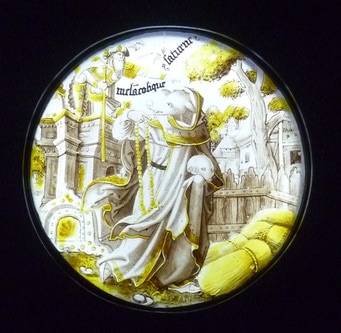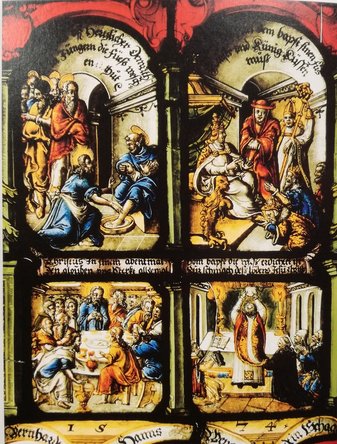|
Stained glass is so often used to reinforce dominant narratives. In the European tradition, it almost invariably depicts widely-accepted narratives and theologies, and/or serves to flatters patrons, whether ecclesiastical, governmental or private. But there are apparent exceptions. Here are a few examples:  Time Banishing Melancholy (c. 1530, Netherlands). While the imagery in this roundel isn't fully understood, it shows a monk with a pig's head being driven away. Since it is likely from the Netherlands in the 16th c., it can be interpreted as anti-clerical. From the collection of the Victoria & Albert Museum.  In this Swiss panel from 1574, the acts of Jesus are contrasted with acts of the Pope. Jesus is shown washing the feet of his disciples, whereas the Pope is shown with a king kneeling at his feet. Jesus is shown breaking bread to share with his disciples at the Last Supper, where the Pope is shown with his back to the viewer, offering the communion host to an altar with giant golden candlesticks. (Image shamefully photographed from a page of Virginia Chieffo Raguin's wonderful 'History of Stained Glass: The Art Of Light, Medieval To Contemporary'. Proper image and credit to follow.)
0 Comments
Your comment will be posted after it is approved.
Leave a Reply. |
 RSS Feed
RSS Feed
